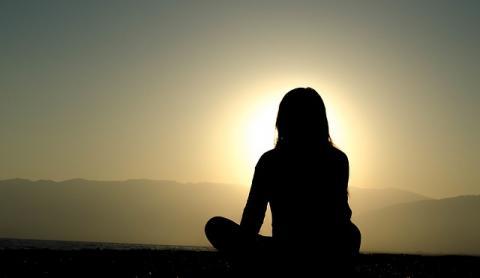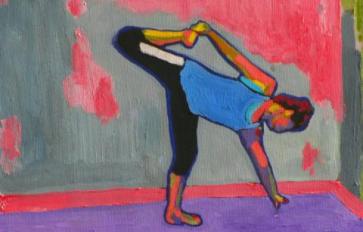
Frying an egg while standing on your head in a bathtub is virtually impossible; it’s certainly not the best posture or venue for cooking. Similarly, there are practical considerations for physical space and posture to enhance all levels of meditation experiences.
Using a dedicated place for meditation and good posture provides mind-body cues for the physical relaxation and mental calmness necessary to deepen practice. Like meditation itself, finding an appropriate posture is experiential, depending upon each individual’s unique flexibility. Physical meditative awareness is knowledge transmitted by meditation and yoga teachers, but not fully realized until it’s experienced firsthand.
Incense, sacred art and flowers are great to include in personal meditation altars. What matters most, though, is that the space feels comfortable and safe and is not excessively noisy. Otherwise, background noises can simply meld into the meditation experience.
Many suggestions and guidelines for meditation posture are well intended, but it hardly makes sense to feel so uncomfortable that the discomfort interferes with the meditation.
Instruction for posture seems pretty standard as many teachers give it. Sit up straight, but not rigid, not hunched forward, with your legs folded in some variation of lotus pose, with your hands resting on your thighs or lap. Relax the jaw and shoulders, tuck the chin slightly. Otherwise, sitting in a chair is okay too, but be sure to have your feet resting on the floor.
Other less standard instructions given to me by various teachers seem worthwhile to consider when adopting whatever posture seems best suited to individual physical needs and flexibility. Additional props, blankets or cushions may be necessary and perhaps over time can be eliminated or scaled back.
Go to where effort meets ease. This means to find a posture that adheres to basic instructions, without making excessive or too little effort. Another teacher advised that, yes, it’s okay to move during meditation if necessary to alleviate discomfort that becomes too distracting. Though any movement during meditation should be done with great awareness and mindfully, not in a reactive manner.
Although it advisable to half way close the eyes and maintain a soft gaze, closing the eyes completely is okay too. One reason to keep the eyes open is to avoid a common obstacle in meditation: falling asleep. For some people closing the eyes encourages more daydreaming and distractions, but not everyone.
It never hurts to review meditation posture basics. Posture can be improved over time without forcing anything. Building upon a solid foundation and improving it is the way to go, rather than being obsessed with having an absolutely perfect full lotus pose from the get-go. There’s always something to work towards, balancing our breath, body and mind together.







